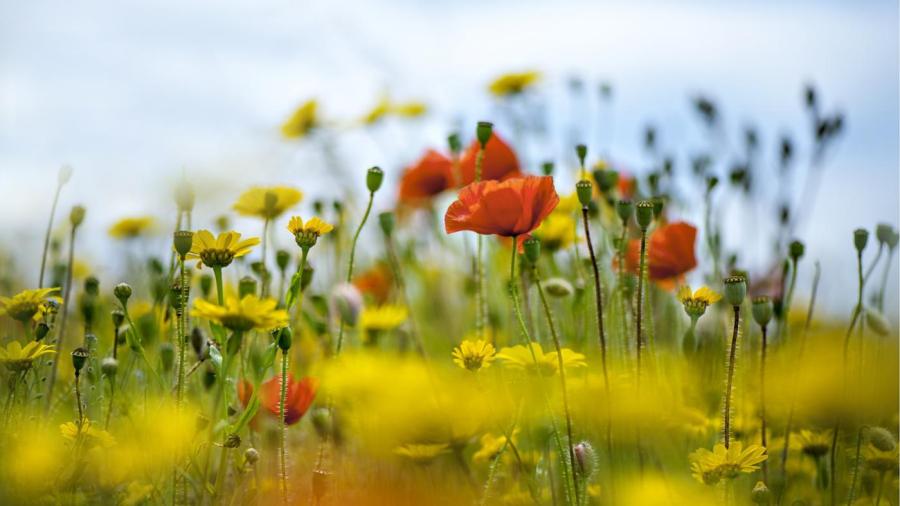What Is the Function of a Flower?

The purpose of a flower is to attract pollinators to a plant to aid in fertilization so that the plant creates seeds. Bright colors, strong scents and sweet nectar all work together to attract birds, bees and other insects to move pollen from one flower to another. After pollination occurs, the flower develops seeds.
Flowers are an important part of the reproductive system of plants. Each flower produces pollen, which is released through the anther part of the stamen. Some flowers produce pollen that is carried by the wind to other flowers so that fertilization takes place. Many flowers require a pollinator to carry the pollen. Common pollinators include hummingbirds, bees, wasps, ants, flies and beetles. In some parts of the world, small mammals and lizards also function as pollinators.
The particular color, pattern or scent of a flower attracts the appropriate pollinators. Pollinators feed on the nectar produced by the flower. During feeding, pollen, which is sticky, adheres to the pollinator’s body. When the pollinator feeds at a different flower, the pollen moves from the body through the flower’s stigma into the ovary where fertilization occurs. At this point, the flower has served its purpose. As the seed develops, the ovary grows into a fruit and the flower withers.





